Lunchtime is approaching and you have just arrived in Sicily, an enchanting and welcoming island with a history spanning thousands of years, rich in culture, mythology, art, and natural beauty, set like a precious gem among the crystal-clear waters of the Mediterranean Sea.
Traditional Sicilian food is varied and it offers several delicacies, showing the cultural influences of various people who have followed one another throughout its ancient history. Its regional recipes are a bond of Mediterranean fragrances and aromas, which constitute an out-and-out melting pot of flavours, derived from North African fusions, Greek, Arabic, Hispanic, Norman, and French cuisine.
We have chosen the top 10 Sicilian typical dishes you must try once in your life for enthusiastic people who want to undertake an itinerary of taste to discover some Sicilian specialties and traditional food.
Do you want to know what to eat in Sicily? Therefore follow us in this reading to find out the wide range of food typicalities of this fascinating territory.

Sicilian typical dishes: a world-famous food heritage
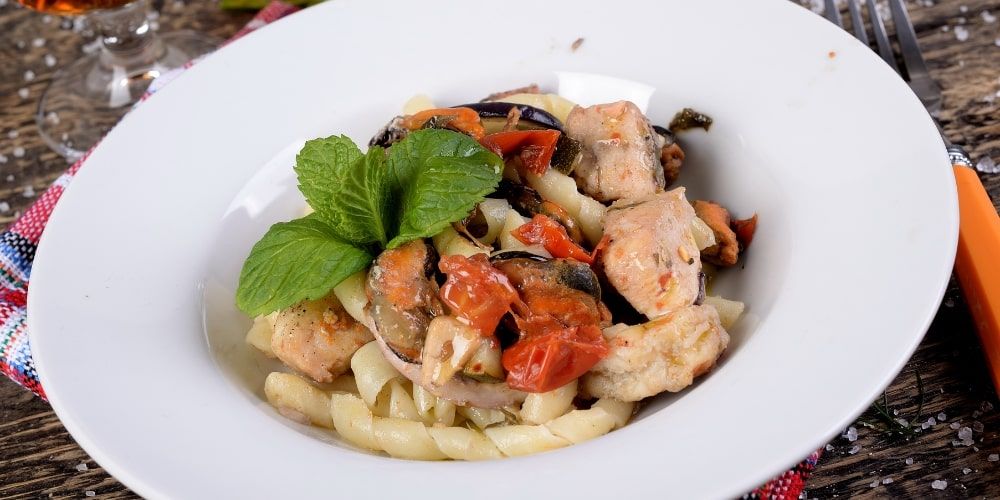
The culture of Sicily has been experiencing increasing international success in recent decades. Thousands of tourists every year visit this beautiful island, being fascinated by its culture and the large number of traditions it still preserves.
Among them, gastronomy certainly represents one of the greatest boasts of this land. Sicilian typical dishes are known everywhere in the world, enjoying an exceptional success that is always increasing.
Between desserts, first courses, and side dishes of unquestionable quality, the cuisine of Sicily will never cease to amaze you. Come and try delicious Sicilian typical dishes for yourself!
10. Sicilian typical dishes: aubergine caponata
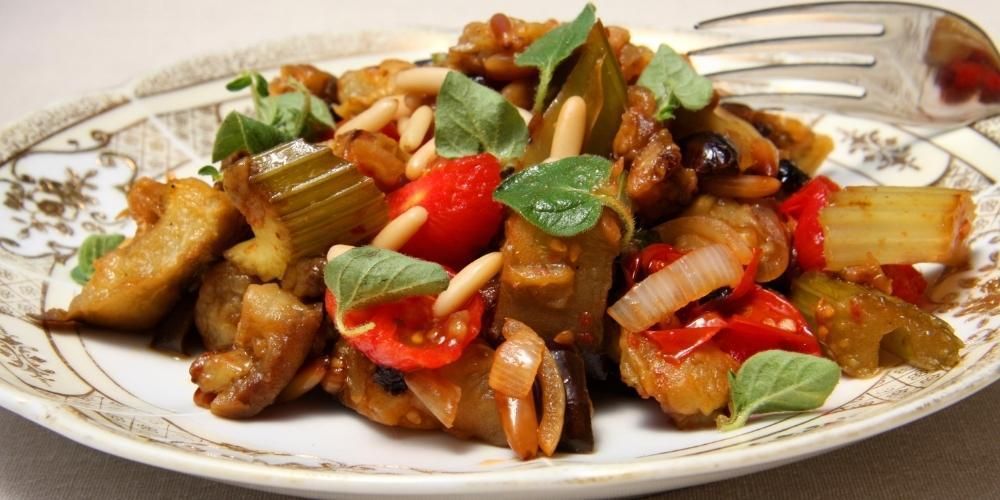
It is an appetizing, natural, and fanciful side dish, that represents one of the symbolic specialities of Sicilian gastronomy. It contains the history, the diversity, and the complexity of typical herbs and spices of the Mediterranean scrub and it is a pride of local culinary tradition.
First of all, aubergine caponata is a humble dish, which exploits the abundance of products, the makings of this fecund, luxuriant, and prodigal land. Its roots date back to the antique peasant civilization, which has managed to enhance the art of getting by cleverly and wisely. Since the poorer social classes could not afford lampuga, an exquisite fish prepared by court chefs, they made up for this shortage by using aubergines.
Although there is not only one version of this flavourful recipe, their common feature is the use of fried aubergine, especially the violet cultivar from Palermo, and the sweet and sour sauce. For instance, we suggest you try the particular version cooked in Agrigento, one of the typical dishes of this picturesque place rich in history, folklore, cultural assets, and patrician residences. This town overlooks the magnificent Valley of Temples, Sicily’s most famous archaeological area, which has become UNESCO’s world heritage site. Firstly this is the location where the antique and sumptuous Greek colony of Akragas, which later became the capital of the Berber and Norman kingdoms, was located.
Moreover, according to the local recipe, they add sweet Arramascati peppers, so-called friggitelli, datterini or cherry tomatoes, celery, tomato puree, white or red onions, olive oil, capers, green and black olives, basil, pine nuts, vinegar, honey, sugar, garlic, chili pepper, raisin , and almonds to the classical ingredients. Explore the Valley of the Temples' treasure trove of historical, natural, and artistic beauty and the evocative Garden of Kolymbethra with a Visit Italy ticket.
Discover the Valley of the Temples and the Garden of Kolymbethra9. Traditional Sicilian food: catanese-style Beccafico sardines
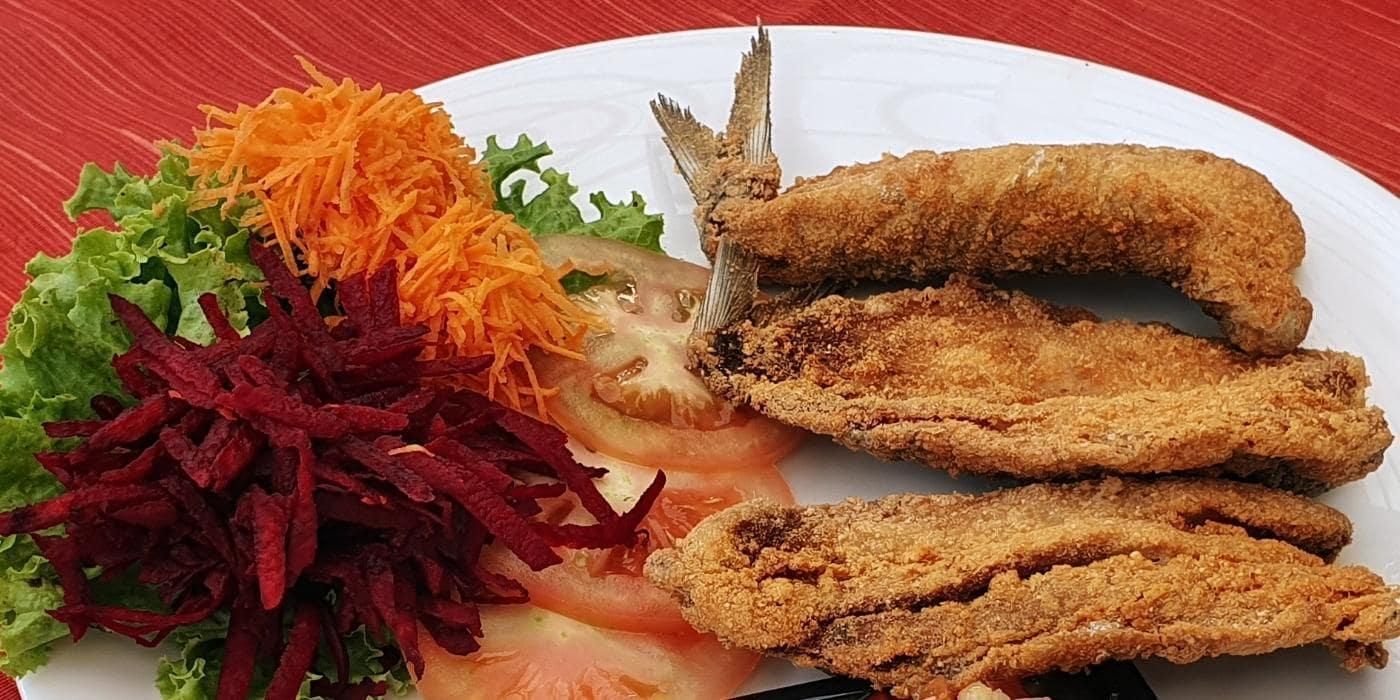
Carrying on with our culinary tour throughout main Sicilian delicacies, beccafico sardines belong to the most well-known and appreciated Sicilian typical main meals you cannot miss. This delicious sardine roulades dish, stuffed with a savoury mixture of raisins, pine nuts, parsley, anchovies, and breadcrumbs, is characterized by an appetizing blend of flavours, colours, and aromatic scents. The preparation is garnished by adding an inebriating orange-flavoured emulsion.
As you can imagine, the origin of its odd name reveals some of the peculiar traits of the Sicilians, namely their acumen and skilful ingenuity, which have led them to develop the art of making do with the resources in their kitchen pantry. Furthermore, we point out a curiosity: in the 19th century, nobles were in the habit of hunting beccafico, an exquisite bird, prepared by the monsù, the cooks of aristocratic families. Seeing as poor social classes could not afford to eat such a refined kind of meat, they decided to use the ingredients at their disposal.
When you visit the wonderful city of Catania, the capital of Sicilian Baroque laid down on the slopes of Mount Etna, you will be mesmerised by the magnetic and dreamlike atmosphere created by the architectural, artistic, and cultural heritage of its marvellous historic centre, dominated by the cathedral of Sant'Agata and the sumptuous elephant fountain, designed by architect Giovanni Battista Vaccarini.
Besides, you will have the opportunity to discover the local version of the recipe, which involves replacing half of the breadcrumbs with pecorino cheese and the addition of garlic and onion. Frying in olive oil, which will highlight the crispness and fragrance of this typical dish, is the preferred cooking method. Undertake an engaging adventure discovering the wild, mysterious, and primordial landscapes near Mount Etna and exploring its trails, summit craters, Aeolian islands, and the gems of the Bove Valley with a Visit Italy ticket.
Discover the excursion to the Summit Craters of Etna8. What to eat in Sicily: arancini/arancine
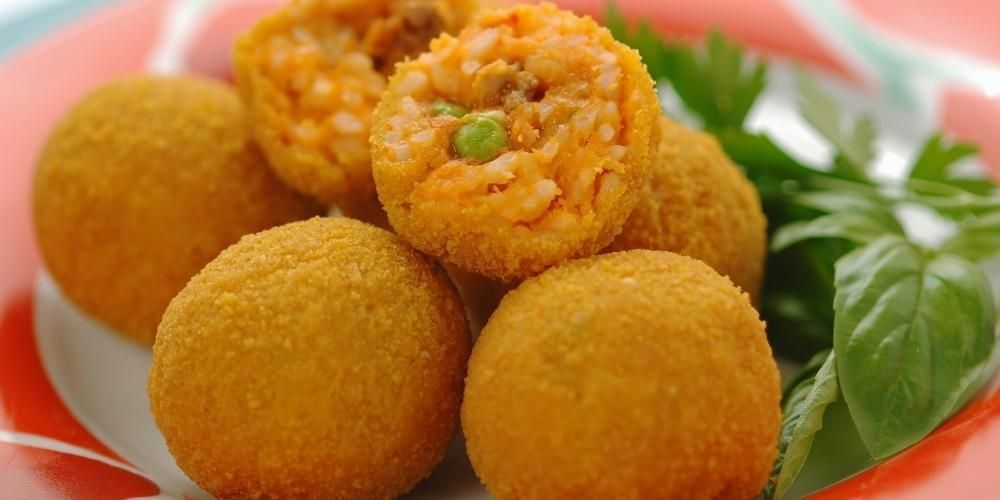
Carrying on with our excursus on the perfect top ten of the traditional recipes of this magic, fascinating, lively, and multifaceted island, there is the famous and exquisite dish called "arancini/arancine" among the Sicilian typical dishes not to be missed at all. This sumptuous, fragrant, and appetizing exquisiteness is one of the most famous and appreciated worldwide traditional Sicilian food, made up of delicious rice timbales and can be round or cone-shaped. They can be eaten at any time of day as a snack, as an appetiser, as a first course, or as a main dish.
Firstly the origins of this tasty and well-known speciality are a discussion topic due to the lack of reliable historical sources that can attest to its history. However, it probably originated during the Saracen supremacy in South Italy between the 9th and 11th centuries, as they used to eat saffron-flavoured rice with vegetables and meat on occasion of rich and lavish feasts. The delicious and crispy breading, which surrounds the soft and savoury filling, was added later in 1200 at the court of King Frederick II to facilitate storage and transportation during hunting expeditions and long journeys.
Besides, its etymology is a highly controversial hot issue for scholars to debate. The Sicilian Etymological Vocabulary, published in 1785, and Giuseppe Biundi's Sicilian-Italian dictionary, published in 1857, indicate its provenance from the etymon arancinu, that is to say, the shade of the melarancio, while according to other sources it might derive from the spherical shape of Palermo's arancini. The issue is complicated further by the fact that the name of this recipe is declined in masculine or feminine gender depending on where you are located, causing other confusion concerning that point.
The Palermitan version of this recipe takes on a feminine nomenclature since its name derives from the diminutive of orange. Therefore, its shape is pretty round and smaller, and its colour is white since the recipe does not use saffron.
The Catanese version, on the other hand, is declined to the masculine gender; it also allows the addition of saffron to the main ingredients. They prepare in a peculiar cone shape, inspired by the evocative Mount Etna, as local tradition suggests.
Even if we can count several variations of this recipe, the traditional ingredients its stuffing consists of are classic and essential ragout, which lends it an exquisite and peculiar flavor, carrots, green peas, ham steak, and stringy mozzarella cheese. We point out a curiosity: there is a custom in Sicily according to which arancini are prepared chiefly on the occasion of the celebration of Saint Lucy, which takes place on December 13th. If you want to deepen your knowledge about Sicilian food and cuisine, get the chance to visit the magnificent city of Palermo, rich in art, history, culture, and evocative monuments. In particular, you will discover the arancini local variant, garnished with a butter-based mixture to satisfy your craving for appealing and tempting culinary delicacies.
7. Sicilian food: Trapani-style couscous
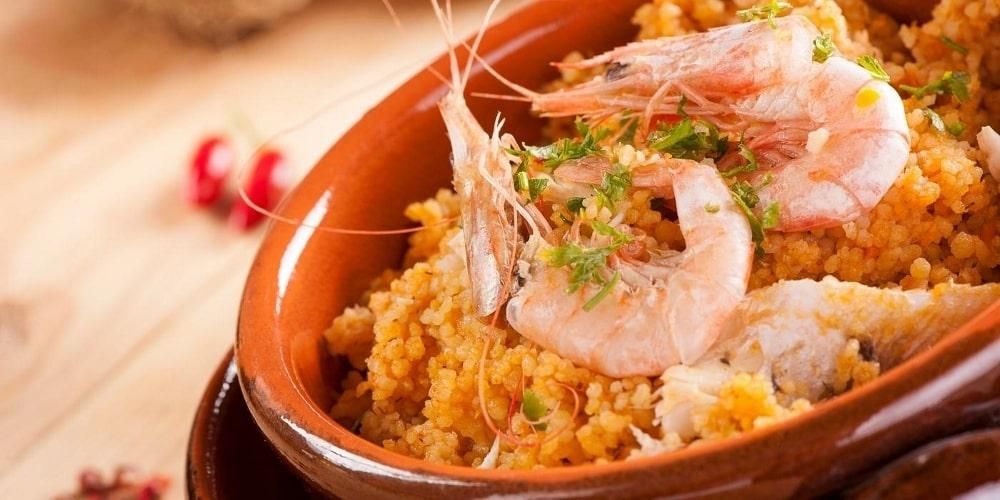
If you go to the evocative locality of Trapani, the city of two seas at the centre of the Mediterranean, embellished with Baroque, Renaissance, and Art Nouveau architectural elements, we recommend tasting one of insular typical dishes, the delicious Trapanese couscous recipe.
First of all, it is one of the Sicilian typical dishes, hailing from Maghrebi culture and tradition, imported to Sicily thanks to the commercial relationships that have taken place by local fishermen during the Arab domination. Above all the significant difference concerning the preparation methods widespread in North Africa lies in the choice of raw materials, such as suitable fishes for soups, among which we can cite snapper, gilthead bream, and tub gurnard.
Moreover, the recipe requires the use of the technique of processing the wheat semolina, the so-called incocciatura, to aggregate the typical grains. As a result the sizzle of the chopped onion, combined with the exotic and pungent mix of spices, such as paprika and saffron, gives the toasted couscous an unmistakable aroma, which spreads from the earthenware tin, delighting immediately the palate of the fellow diners.
As you stroll through the beautiful old town, embellished by antique and elegant baronial palaces, 14th-century Gothic churches, characteristic arabesque alleys, majestic city walls, and towers, you will have the opportunity to admire the artistic beauty of ancient Drepanum, famous for its colourful corals, mills and salt pans. Nowadays, it has also become Italy's sailing capital and it hosts sporting events of international importance, such as the Luis Vuitton Cup. In the area adjacent to the marina there are interesting tourist attractions you can visit, such as the Tower of Ligny, the symbol of the city from which you can contemplate breathtaking landscapes, the Colombaia, and the Aragonese castle. Enjoy an exciting boat tour from Trapani, visiting the picturesque villages of Favignana and Levanzo, and admiring the beautiful coastline with a Visit Italy ticket.
Discover the boat tour of Favignana and Levanzo6. Traditional Sicilian food: Sicilian cassata cake

Sicilian cassata cake
Sicilian pastry-making, known for its opulence, refinement, and elaborate recipes, offers a wide range of exquisite confectionery products and sweets, that will whet your appetite. If you want to taste the quintessence of the most famous desserts from the rich array of offerings, we propose you one of its symbols par excellence, the well-known cassata.
Its charming history dates back to the period of Arab domination over Palermo. However, the recipe that has spread nowadays is the result of evolution that has taken place in the Norman era, following the invention of royal pastry by nuns at the Martorana convent, made with almond flour. In 1873, Palermitam confectioner Salvatore Gulì codified cassata as we know it today.
Formerly created as an Easter cake, it is a refined and elegant dessert that will pleasantly surprise you with its sumptuous Baroque-style decorations. The starting point of this recipe is represented by a soft sponge cake, which then will be skilfully garnished with abundant layers of ricotta cheese, candied fruit, marzipan, and zuccata, that is to say, a typical product made up of candied pumpkin, chocolate shavings, and icing sugar glaze.
The town of Palermo is like an onion, made up of layers. Each time you take off one of them, there is another one to peel.
The magic and kaleidoscopic Palermo, rich in history, culture, and artistic masterpieces, founded by the Phoenicians of Tyre in the 7th century B.C. and later conquered by the Romans, the Vandals, and the Ostrogoths, is a lively city teeming with tourists, famous for its markets, adorned with lush tropical vegetation, which gives it a particular exotic atmosphere, typical of North African countries. Its suggestive historic centre is a stage for architectural monuments of Arab-Norman origin, magnificent palaces of Baroque and Renaissance inspiration, and exquisite polychrome mosaics, which enchant travellers.
5. What to eat in Sicily: pani câ meusa
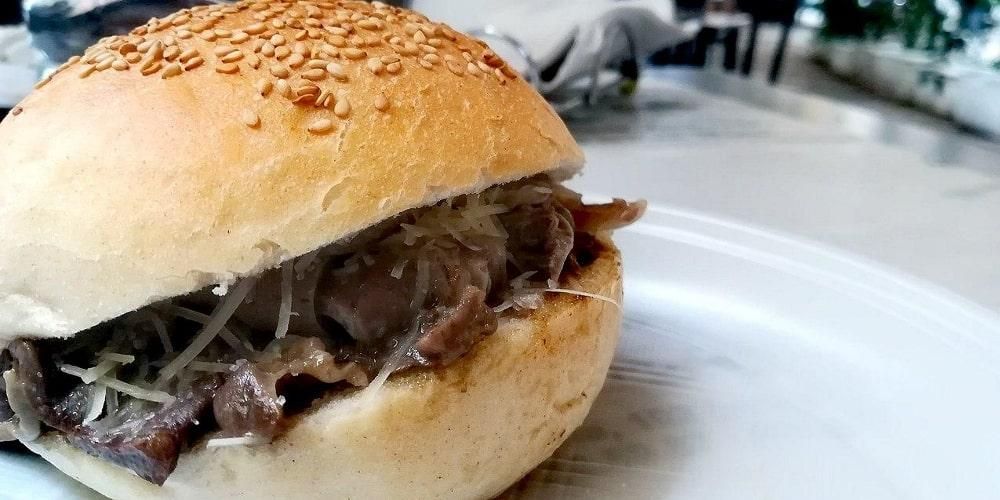
Well-known Sicilian Street Food can be considered a chapter in itself, made up of appetising, genuine, and authentic flavors, representing one of the cornerstones of the local gastronomic culture and an authentic popular culinary heritage. Its temptations can please the tastes of everybody in the true sense of the word thanks to the variety of its courses. Trying it allows you to delve deeper into the island's gastronomy and discover exquisitely indigenous delicacies.
The pani câ meusa is an authentic specialty in Palermo's gastronomic tradition, whose antique history dates back to the Middle Ages. The origin of this iconic and appreciated specialty comes from kosher cuisine. Some members of the Palermitan community were engaged in slaughtering meat: since they could not receive money for their work due to religious precepts, they retained the entrails as a fee for their services. Thus, observing the tastes and peculiar habits of the Palermitani people, they contrived a clever way to turn these scraps into a source of income. Following the expulsion of the Jewish community by King Ferdinand II of Aragon, the practice of this activity was kept up by the so-called local caciuttari.
This delicious traditional Sicilian food consists of a vastedda, a round-shaped bun, covered with a sprinkling of spiced sesame seeds, filled with a mixture, offal, boiled, or with steam technique, and fried in lard. In particular, méusa is made up of frugal ingredients, like spleen, lung, and ox trachea. Its name comes from the combination of the ancient Germanic word mīlzi and the etymon melsa, which is the Catalan equivalent. Sicilian people usually prepare it in two versions: the first one is called schettu, seasoned with some salt, and pepper and flavored with lemon, while the second one is maritatu, garnished with caciocavallo cheese and sheep's milk ricotta. You can taste this fanciful delicacy sold at the stands of street vendors, the so-called meusari, most of which are located at Palermo's historic markets, the Vucciria, Capo, and Ballarò.
If you are fond of local folklore, typical customs, and traditional cuisine, and you want to discover the most authentic, cheerful, and cosmopolitan atmosphere of this enchanting city, a crossroads of peoples and cultures, you cannot miss the historical neighborhoods of the picturesque and spectacular local markets: you will be enchanted by the myriad of the sounds, colors and the enveloping scent of oriental spices that hovers in the air and that will delight your senses.
4. Sicilian food: panareddi
The pastry-making of Caltagirone, nestled like a gem on gentle hills between the Iblei and Erei Mountains, is pretty renowned and mainly linked to local products. Its typical specialities are the legacy of ancient traditions dating back to different historical periods; in fact, they are made on the occasion of special religious events. If you are greedy, take the chance to try panareddi, the handmade dessert, typical of the Calatino land, that is customarily prepared for the Easter festivities, even if it is available during the rest of the year. Its name derives from the Panaro, the traditional wicker basket, whose effigy is depicted on these succulent biscuits.
The main ingredients this recipe consists of are flour, lard, sugar, vanillin, eggs, cloves, and grated orange, which lend it a unique taste. This savour dish, which evokes ancient culinary flavors, has a symbolic value related to sharing and brotherhood. Then this delicacy is garnished with oriental ornaments, such as egg baskets, bunches of grapes, broad beans, apples, and pears.
Caltagirone is one of the most coveted destinations in Sicily, enriched by its precious historical center, which was awarded the prestigious UNESCO World Heritage status in 2002. Besides, it is the headquarters of the famous production of fine handmade ceramics and it is one of the most appealing art cities in Noto Valley. There are a lot of monuments and sights you can admire, among which we can mention the impressive Norman Cathedral of San Giuliano, and the magnificent staircase of Santa Maria del Monte, built in 1606. This masterpiece was decorated further by adding colorful and precious majolica. In May, the traditional Flower Festival takes place here to pay homage to the Madonna di Conadomini, the town's compatriot. Other major tourist attractions which are worth visiting are the fascinating Villa Patti, the Crescimanno of Albafiorita Palace, the Guttadauro of Reburdone Palace, and the refined Art Nouveau buildings, such as the Terracotta Palace, whose façade is embellished with floral motifs, making it an astonishing artwork.
3. Traditional Sicilian food: Turkish Head of Scicli
Among the delicacies offered by the wide range of Sicilian gastronomy, you could also choose to taste the scrumptious Turkish heads of Scicli, a picturesque Baroque town of Noto Valley, located in the Ragusa region. This gem offers a wide range of opportunities and of things to see: its Old Town, enriched by patrician palaces and elegant architectures, has been described by Elio Vittorini as one of the most beautiful cities in the world. UNESCO included it in the World Heritage Sites List in 2002 and it has acquired fame because it was chosen as the location for shooting the Commissario Montalbano television series.
This delicacy is a renowned, cream puff-shaped cake, prepared with lard, filled with cream or ricotta cheese and covered with chocolate shavings, which is an unmissable dessert of the confectionery tradition of this picturesque village.
The distinctive shape of this speciality, similar to a turban, has a deeply symbolic value in remembrance of the legendary battle, that occurred in 1091, which saw the victory of the Christian Normans over the Ottomans by Roger of Altavilla. This event is celebrated by the Feast of Our Lady of the Militia, which traditionally is held on the last Saturday of May.
During this festivity, a painting made in the 18th century and a statue depicting the Virgin on horseback, while she is wearing an armour and she is brandishing a sword, are venerated to commemorate her descent and her decisive intervention to save the population from Saracen raids.
2. What to eat in Sicily: pasta with Moorish sauce
The cuisine of Syracuse is very special, marked by the prevalence of simple, earthy ingredients and the strong imprint of a tradition rooted in the Greek, Arab, and Middle Eastern worlds. Its variety of flavours reflects the core of several cultures with which it has come into contact throughout the centuries.
Therefore pasta with Moorish sauce is one of the most emblematic Sicilian first courses of the history of this area, reminiscent of the age of Moorish domination. Above all, it is a seafood first course, with delicate and fresh scents, evoking the historical events surrounding the clash between Count Roger and Emir Belcane. This recipe is prepared with buckwheat spaghetti, flavoured with an aromatic pesto of lemon herbs, seasoned with the floral tones of dog rose and elderflower, topped with a sauce of bottarga, orange, pine nuts, lemon, and toasted breadcrumbs, and garnished with a delicious and elegant touch of grated white grouper.
Syracuse, founded in 734 B.C. as a charming colony of Magna Graecia, was described by Cicero as "the greatest Greek city and the most beautiful of all". Indeed, it is a true jewel, multifaceted, nestled on the Ionian coast of Trinacria. Strolling through its streets, you will have the sensation of taking a journey through almost 2800 years of history. The Greek myth, the Christian religion, the influences of the Arab and Byzantine civilisations, and Gothic and Norman art coexist in harmony in an extraordinary kaleidoscope of shapes, colours, artistic masterpieces, and dazzling beauty, all waiting to be discovered.
Among the different proposals, we would like to point out the historical centre, consisting of the island of Ortigia, from which an evocative labyrinth of streets full of tempting cultural attractions branches off, such as impressive museums, the 5th century BC Greek theatre, the latomie, the Neapolis Archaeological Park, the Magnace and Euryalus castles, the Cathedral and the natural reserve of Cavagrande, the Temple of Apollo and the Arethusa Spring. Treat yourself to an exciting tour departing from Taormina to discover the magnificent artistic and historical-cultural masterpieces of Syracuse, Catania, and Ortigia with a ticket from Visit Italy.
Visit Siracusa, Catania and Ortigia with a guided tour1. Sicilian food: sfoglio di Polizzi typical cake
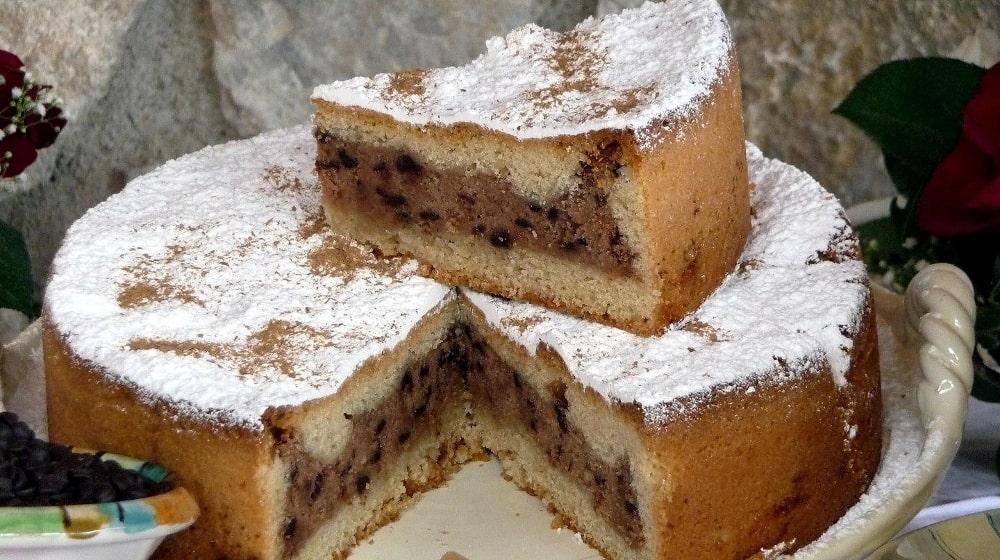
Among the traditional Sicilian food, sweets are authentic delicacies of its famous pastry-making, loved all over the world, rich in history, tradition, and craftsmanship. Throughout the centuries this magnificent region, a link between the Greek culture and the Roman world, has been inhabited by a lot of people, which have contributed profoundly and indelibly to shaping the multifaceted and multicultural soul of this beautiful land.
Give yourself a moment of leisure, relaxation, and pure pleasure for the palate by savouring the sfoglio polizzano, a typical sweet of the Madonie, whose invention, attributed to the nuns of the Benedictine Monastery of Santa Margherita, located in Polizzi Generosa, dates back to early 1600. You will be pleasantly surprised by the strong flavour of the sheep's tuma filling. The use of this cheese, a pivotal food and essential source of sustenance of the ancient agricultural and pastoral civilisation, was common in the preparations of medieval and Renaissance gastronomic culture.
It looks like a soft puff pastry, which wraps, like a precious chest, a scrumptious filling made with tuma, a typical Sicilian kind of cheese, so-called candied zuccata, pumpkin preserved in sugar, Marsala wine, dark chocolate, and a plentiful sprinkling of cinnamon, which enhances its refined taste by bringing an enveloping exotic aroma.
If you have enough time, get the chance to visit this marvellous hamlet, located within the lush Madonie Park, a precious protected natural area rich in wildlife and endemisms. This medieval village, historically chosen as a locus amoenus by Princes and Sovereigns to spend their holidays, is rich in history, art and traditions and it has been the birthplace of illustrious jet setters, such as Vincent Schiavelli, a famous actor, who has taken part of the cast of several movies, Domenico Dolce, founder of the famous fashion brand, film director Martin Scorsese and writer Giuseppe Antonio Borgese.
About the author
Written on 06/09/2024


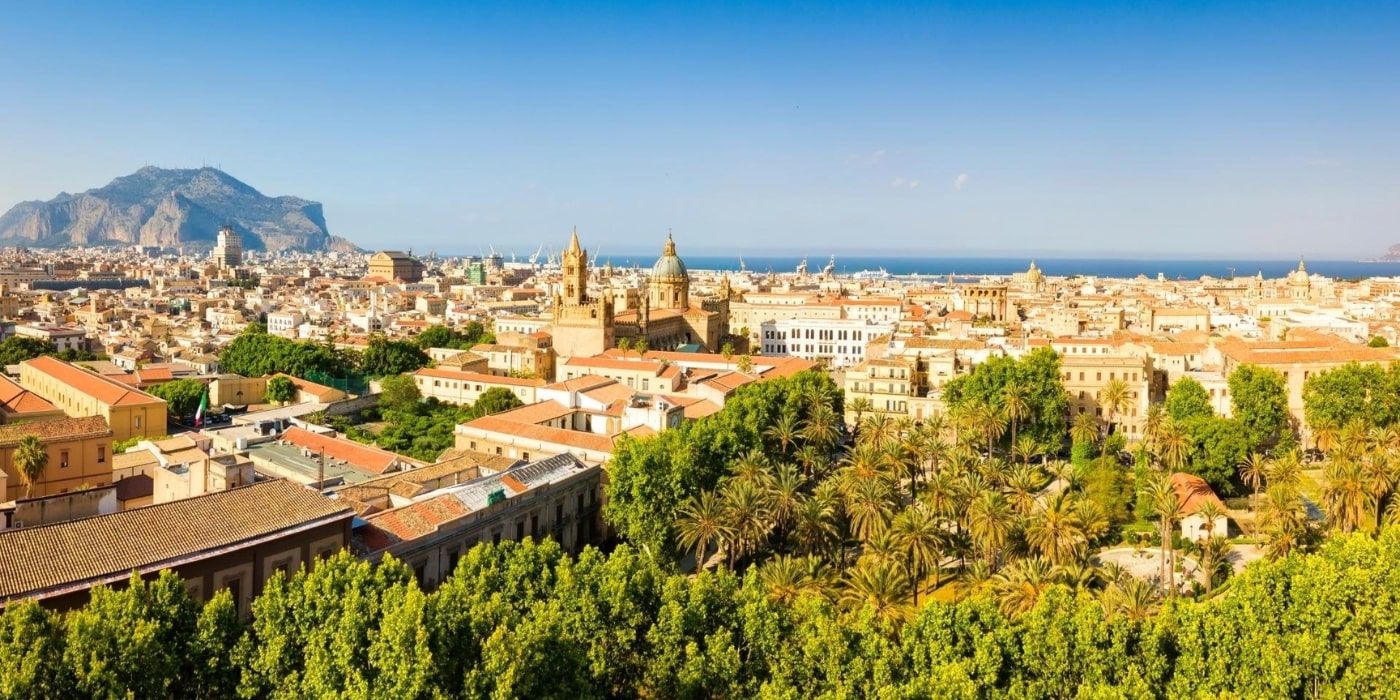
Simone Pini
Are you fond of good food and traditional cuisine? Discover Sicilian typical dishes with this itinerary through its delicious regional recipes.